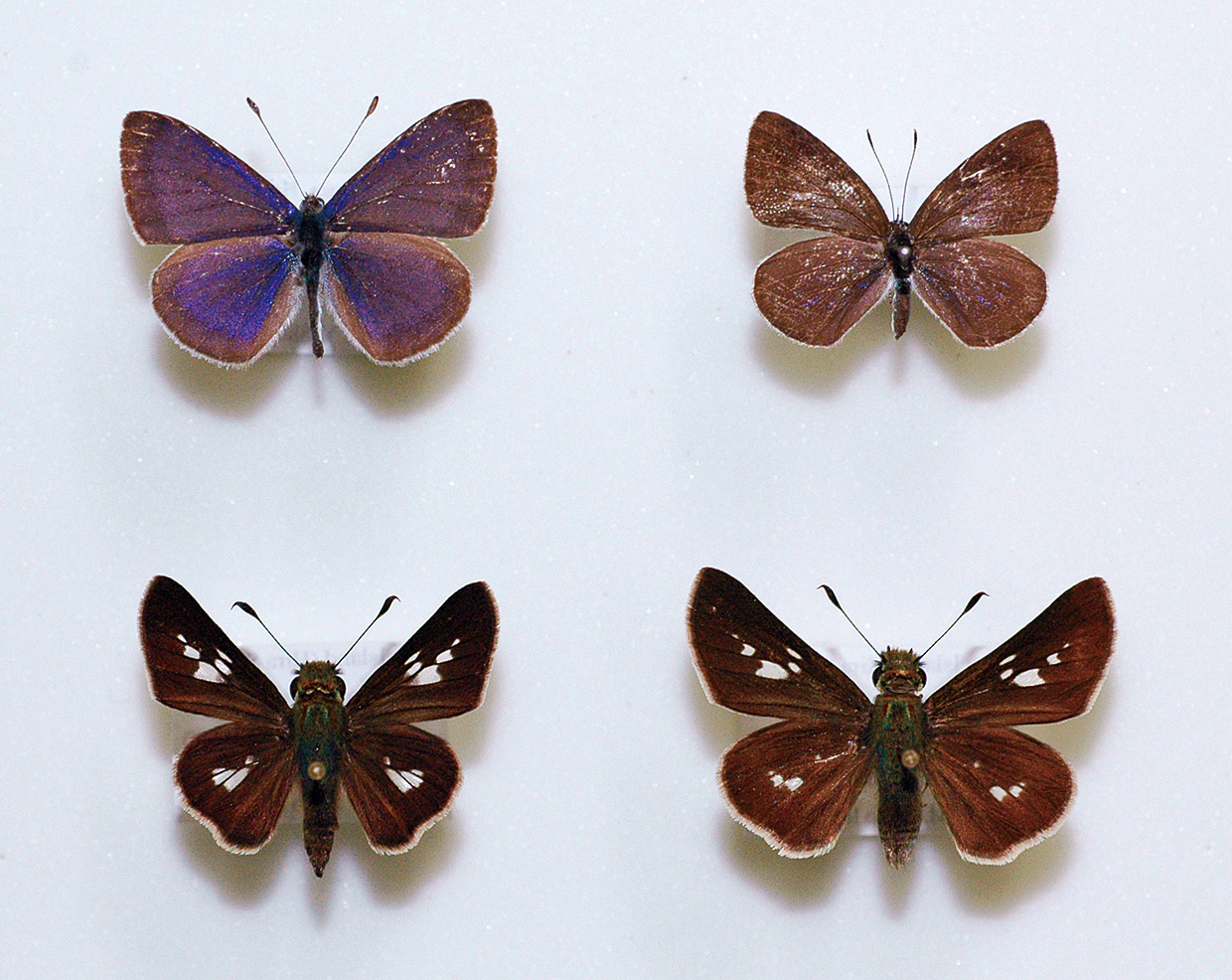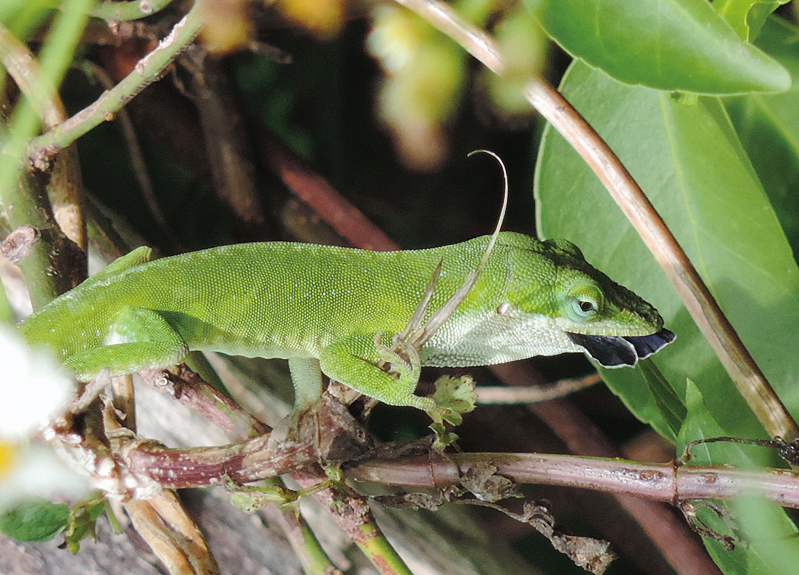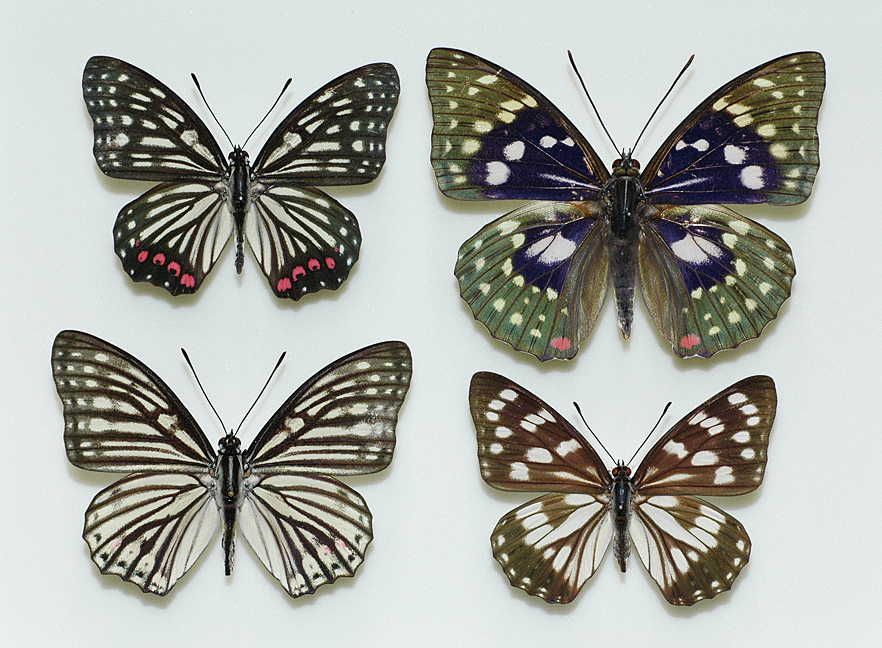C5
The issues affecting butterflies from invasive alien species
Two small butterflies, Celastrina ogasawaraensis and Parnara ogasawarensis, endemic to Ogasawara Islands, are ranked as Threatened IA and II respectively in the current Red List of the Ministry of the Environment, Japan (MOE). In particular, the former was also designated as a National Endangered Species of Wild Flora and Fauna by the MOE in 2008. The reason is because that the two species are recently threatened with extinction due to predation by an introduced lizard, Green Anole (Anolis carolinensis), and to invasion of some introduced trees such as Bischofia javanica and Leucaena leucocephala. For the purpose of conservation, national and local governments, zoos,researchers, NPOs and volunteers are collaborating closely with each other and conducting conservation activities.
Hestina assimilis assimilis from the Chinese Continent has widely expanded in Honshu, Japan, since it was introduced to Kanagawa Prefecture of the Kanto district in 1998. The adults generally suck fluids from tree sap, fruit and animal-dung, and the larvae feed on leaves of Celtis sinensis in Japan. Worryingly, this species occupies the same niche as two native species, Sasakia charonda and Hestina persimilis, in hostplant selection and ecological behavior. Thus, there is strong concern that reproductive interference and interspecific competition will be caused between the non-native and native species. (Masaya Yago)
References
斎藤昌幸・矢後勝也・神保宇嗣・倉島 治・伊藤元己 (2014) 「外来蝶アカボシゴマダラの潜在的生息適地:原産地の標本情報と寄主植物の分布情報を用いた推定」Lepidoptera Science 65 (2): 79–87。
矢後勝也・中村康弘 (2007) 「オガサワラシジミの食性と保全」Journal of the Butterfly Society of Japan, Butterflies (46): 35–45.
矢後勝也 (2011)「チョウにおける外来種問題の現状」『昆虫と自然』47 (1): 12–15。
矢後勝也 (2014) 「小笠原の絶滅危惧種オガサワラシジミの現状と保全体制」『昆虫と自然』49 (9): 4–7。



